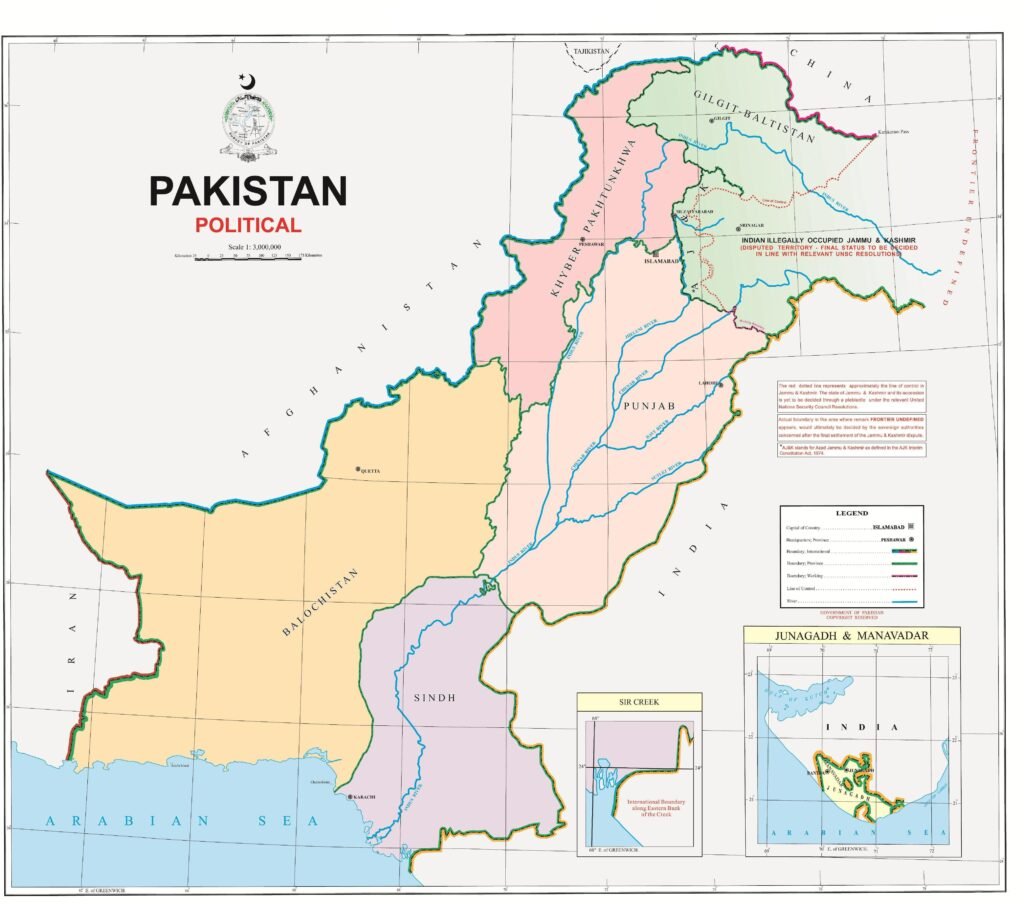Pakistan literally means “Land of the Pure” in Urdu and Persian. It comes from the word pāk meaning pure in Persian and Pashto while the word istān is a Persian word meaning place of; it is a cognate of the Sanskrit word sthān.
It was coined in 1933 as Pakistan by Choudhry Rehmat Ali, a Pakistan Movement activist, who published it in his pamphlet Now or Never, using it as an acronym (“thirty million Muslim brethren who live in PAKISTAN”) referring to the names of the five northern regions of the British Raj: Punjab, Afghania, Kashmir, Sindh, and Baluchistan.
Pakistan’s National language is URDU. Pakistan is an Islamic republic with its capital in Islamabad. It has four provinces: Baluchistan, Khyber Pakhtunkhwa (KPK), Punjab, and Sindh. Their respective capitals are Quetta, Peshawar, Lahore, and Karachi. In addition to provinces, are the Federal Administered Northern Areas (F.A.N.A) and Federal Administered Tribal Areas (F.A.T.A). Pakistan has a federal structure.
After independence from the partition of India in 1947, Muhammad Ali Jinnah, the President of the Muslim League, became the nation’s first Governor-General as well as the first President-Speaker of the Parliament. Meanwhile, Pakistan’s founding fathers agreed upon appointing Liaquat Ali Khan, the secretary-general of the party, the nation’s first Prime Minister.
A dominion status in the Commonwealth of Nations, Pakistan was under two British monarchs when George VI relinquished the title of Emperor of India to become King of Pakistan in 1947. After George VI’s death on 6 February 1952, Elizabeth II became the Queen of Pakistan who retained the title until Pakistan became the Islamic republic in 1956.
Parliament consists of National Assembly and the Senate. Members of the National Assembly are directly elected on the adult franchise base and their term of office is five years. The National Assembly determines the major policy issue and passes the annual budget and legislation. It elects the Prime Minister from among its members. The Prime Minister forms his / her cabinet from among members of the Assembly and Senate. Provinces have their own elected legislative Assemblies and Chief Ministers. The Provincial Assemblies elect the majority of the members, of the upper house.
Map of Pakistan


Official Websites of Pakistan
- Government of Pakistan: www.pakistan.gov.pk
- Government of Punjab: www.punjab.gov.pk
- Government of Khyber Pakhtunkhwa: www.khyberpakhtunkhwa.gov.pk
- Government of Sindh: www.sindh.gov.pk
- Government of Balochistan: www.balochistan.gov.pk
- Government of Gilgit Baltistan: www.gilgitbaltistan.gov.pk
- Government of Azad Jammu and Kashmir: www.ajk.gov.pk

